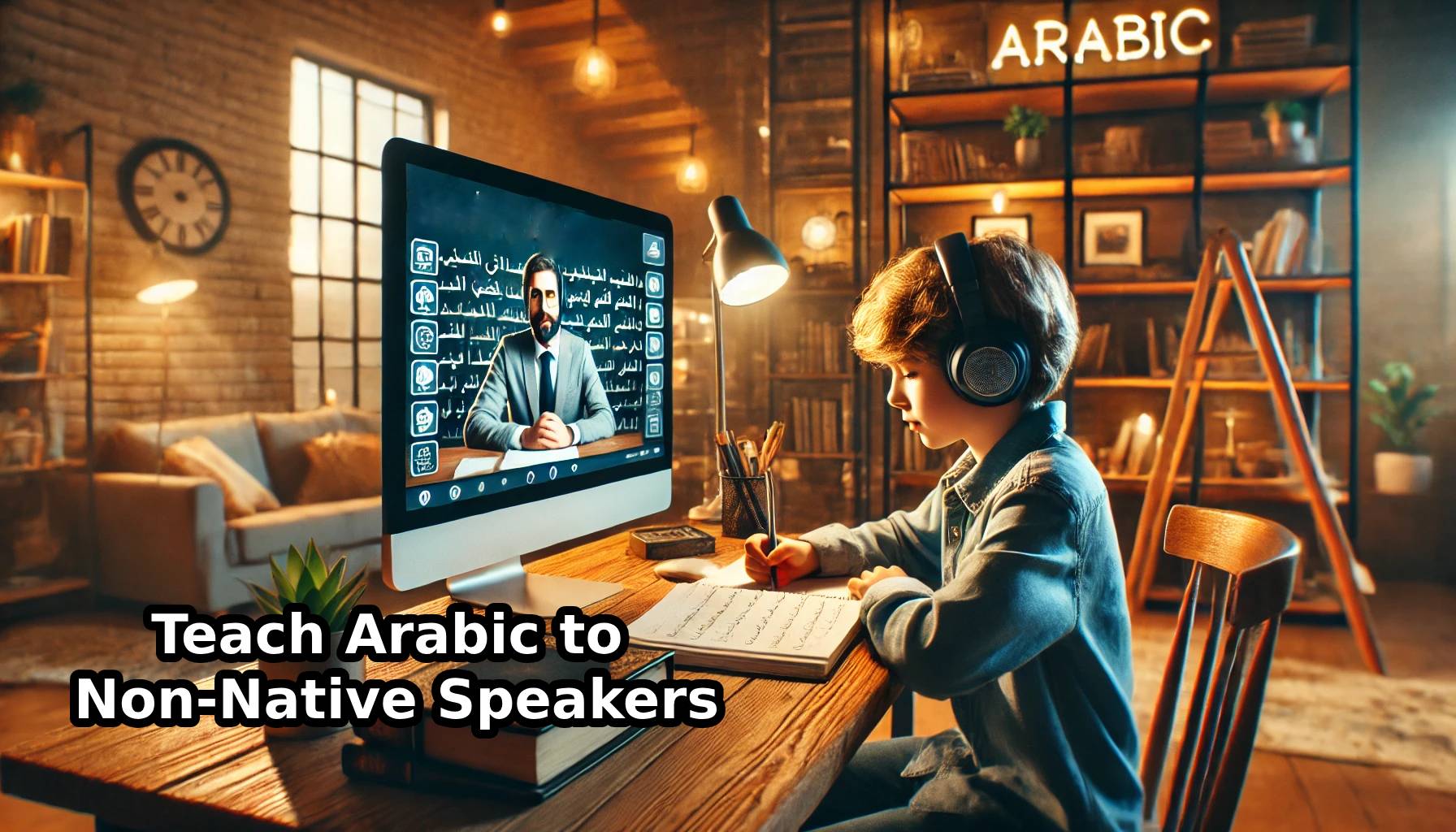Introduction
The Arabic language is not only a means of communication but also a gateway to understanding the Quran and Islamic culture. Teaching Arabic to non-native speakers has become increasingly important, especially as more people seek to connect with the language of the Quran. As Allah says:
“إِنَّا أَنزَلْنَاهُ قُرْآنًا عَرَبِيًّا لَعَلَّكُمْ تَعْقِلُونَ” (يوسف: 2).
The Significance of Teaching Arabic to Non-Native Speakers
Arabic is the key to understanding the Quran and Islamic heritage. For non-native speakers, learning Arabic provides an opportunity to deepen their knowledge of Islam and strengthen their connection to its teachings. This process requires innovative approaches that make the language accessible and engaging for learners from different backgrounds.
The Prophet Muhammad (ﷺ) said:
“من سلك طريقًا يلتمس فيه علمًا سهَّل الله له طريقًا إلى الجنة” (رواه مسلم).
This Hadith highlights the virtue of seeking knowledge, including learning Arabic as a means to better understand Islam.
Subsections
- Interactive Tools for Teaching Arabic
Modern tools such as online platforms, apps, and multimedia resources have revolutionized the way Arabic is taught. These tools help non-native speakers learn vocabulary, grammar, and pronunciation in an engaging way. By incorporating videos, flashcards, and quizzes, learners are able to retain knowledge more effectively.
Allah says:
“وَعَلَّمَ آدَمَ الْأَسْمَاءَ كُلَّهَا” (البقرة: 31),
emphasizing the importance of learning names and vocabulary as the foundation of language.
- Cultural Immersion in Arabic Learning
Understanding the culture associated with a language enhances the learning experience. By integrating Islamic traditions, Quranic verses, and daily conversations into lessons, learners develop a deeper connection with Arabic and its context.
The Prophet Muhammad (ﷺ) encouraged understanding one another when he said:
“الدين النصيحة” (رواه مسلم),
which reflects the importance of clear communication and understanding.
- Simplified Approaches for Non-Native Speakers
Simplifying grammar rules and focusing on practical usage helps non-native speakers overcome the challenges of learning Arabic. By prioritizing conversational skills and real-life applications, learners can quickly build confidence and start using the language effectively.
Allah says:
“وَلَقَدْ يَسَّرْنَا الْقُرْآنَ لِلذِّكْرِ فَهَلْ مِن مُّدَّكِرٍ” (القمر: 17),
reminding us that ease and simplicity are essential in any learning process.
Conclusion
Teaching Arabic to non-native speakers is a rewarding endeavor that opens doors to understanding the Quran and Islamic culture. By using modern tools, embracing cultural immersion, and simplifying the learning process, teachers can make Arabic accessible and enjoyable for learners worldwide. This effort contributes to spreading the light of Islam and fulfilling the divine command to convey its message.
The Prophet Muhammad (ﷺ) said:
“بلِّغوا عني ولو آية” (رواه البخاري).
Categories
- Teaching Arabic to Non-Native Speakers
- Using Interactive Tools for Language Learning
- Cultural Immersion in Education
- Simplified Arabic Grammar and Conversation
- The Role of Arabic in Understanding Islam


Comments are closed